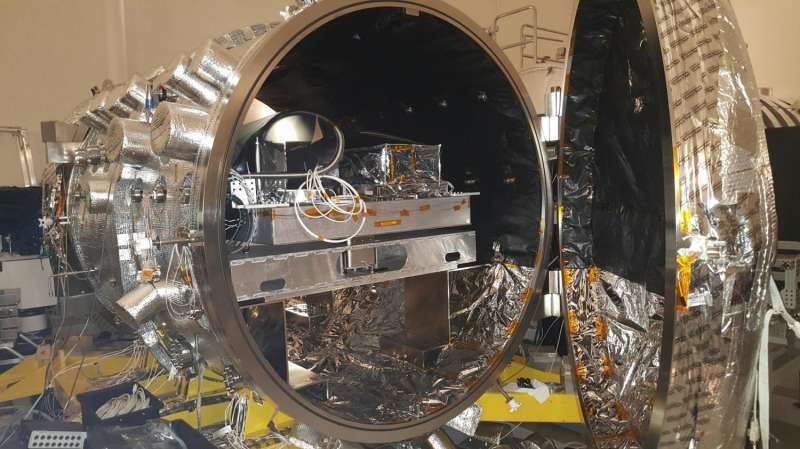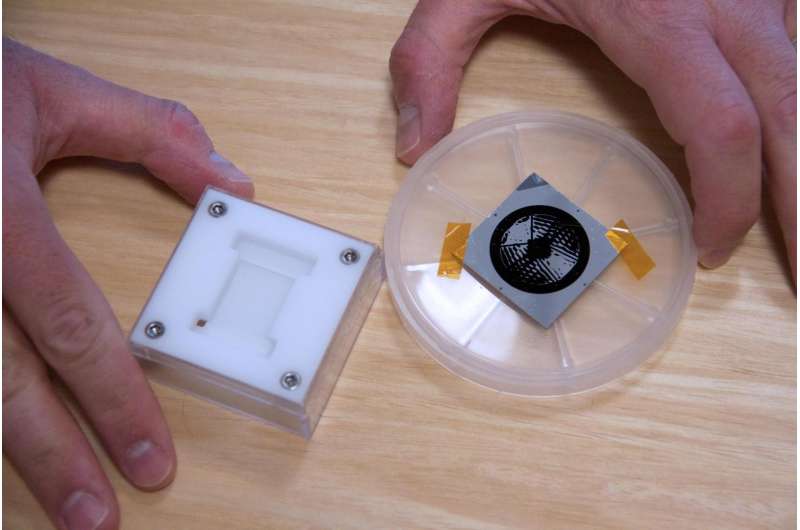Hiding in the sunshine: the search for other Earths

We humans might not be the only ones to ponder our place in the universe. If intelligent aliens do roam the cosmos, they too might ask a question that has gripped humans for centuries: Are we alone? These aliens might even have giant space telescopes dedicated to studying distant planets and searching for life. Should one of those telescopes capture an image of our blue marble of a planet, evidence of forests and plentiful creatures would jump out as simple chemicals: oxygen, ozone, water and methane.
Many earthlings at NASA are hoping to capture similar chemical clues for Earth-like planets beyond our solar system, also known as exo-Earths, where "exo" is Greek for "external." Researchers are developing new technologies with the goal of building space missions that can capture not only images of these exo-Earths, but also detailed chemical portraits called spectra. Spectra separate light into its component colors in order to reveal secrets of planets' atmospheres, climates and potential habitability.
"Evidence for life is not going to look like little green people—it's going to reveal itself in a spectrum," said Nick Siegler, the chief technologist for NASA's Exoplanet Exploration Program Office at the agency's Jet Propulsion Laboratory in Pasadena, California. The program is helping to develop NASA's plans for future exo-Earth imaging missions.
Be gone starlight
On the road to this goal, NASA is actively developing coronagraph technology in various laboratories, including JPL. Coronagraphs are instruments introduced in the early 20th century to study our sun. They use special masks to block out light from the circular disk of the sun, so that scientists can study its outer atmosphere, or corona.
Now NASA is developing more sophisticated coronagraphs to block the glaring light of other stars and reveal faint planets that might be orbiting them. Stars far outshine their planets; for example, our sun is 10 billion times brighter than Earth. That's similar to the flood of football stadium lights next to a tiny candle.
"The search for Earth-like planets begins with the suppression of starlight," said Rhonda Morgan of JPL, a coronagraph technologist for the Exoplanet Exploration Program Office. "It's like blocking the sun with a sun visor while driving in order to see the road."
Telescopes on the ground have already used coronagraphs to take pictures of planets, but those planets are easier to photograph because they are large, bright, and orbit far from their host stars. To take a picture of Earth-size planets lying in the habitable zone of sun-like stars—the region where temperatures are just right for possible liquid oceans and lakes—will require a telescope in space. Out in space, the blurring effects of our blustery atmosphere can be avoided.

Several types of coronagraphs are under development for proposed space missions. One mission, led by NASA's Goddard Space Flight Center, Greenbelt, Maryland, is known as WFIRST. WFIRST stands for Wide-Field Infrared Survey Telescope. The WFIRST mission would be able to identify chemicals in the atmospheres of exoplanets as small as super-Earths, which are like Earth's bigger cousins, such as Kepler-452b, a recent discovery by NASA's Kepler mission. This would pave the way for future studies of the smaller exo-Earths. The WFIRST mission would also investigate other cosmic mysteries such as dark matter and dark energy.
Tinkering with tiny masks
Engineers and scientists at JPL are busily tinkering with different coronagraph technologies for WFIRST. Ilya Poberezhskiy, who manages the testbeds at JPL, explained two primary coronagraph designs while holding in his hand the tiny, starlight-blocking masks. One of them, the "shaped pupil" mask, is a few centimeters across, while the "hybrid Lyot" mask is a pinprick of a dot, barely visible at only one-tenth of a millimeter in size. Both technologies will fly together on the WFIRST mission as a part of one instrument—the occulting mask coronagraph.
"A wheel-like mechanism will rotate to switch different masks inside the instrument and convert the coronagraph from one mode to another," said Poberezhskiy.
The main challenge for coronagraphs is controlling starlight, which has a tendency to stray. Just putting a circular mask in front of the star doesn't obstruct the light completely; starlight bends around the mask like ocean waves curving around islands in a process called diffraction. Each coronagraph type deals with this challenge differently by using multiple masks as well as mirrors that can deform to sequentially suppress starlight in various stages.
An animation explaining how the hybrid Lyot coronagraph works can be seen online at: exoplanets.jpl.nasa.gov/resources/1061/
"The starlight likes to walk all over the place, and into the area where you want to image the planet," said Wes Traub, the JPL project scientist for WFIRST. "The goal now is to get more practical with the kind of telescope we will use for WFIRST."
How to handle jitter
Another challenge in designing coronagraphs is adjusting for a space telescope's tiny vibrations, or jitter. The team at JPL is assessing how their coronagraphs handle jitter by simulating the effects in a vacuum chamber. They built a table-top-size telescope simulator for the tests.
"In space, telescopes experience warping and vibrations that need to be measured and reduced inside the coronagraph," said Poberezhskiy. "Our mock telescope will let us test the WFIRST coronagraph under realistic, space-like conditions."
As WFIRST development moves forward, mission planners are already thinking about a possible next step: a space telescope designed to image true Earth analogs. Such a mission may be more than a decade away, but development of the nuts and bolts of the technology is underway at a feverish pace.
"It's an exciting time for exoplanet research," said Gary Blackwood, manager of the Exoplanet Exploration Program. "This is history in the making."
WFIRST is managed at NASA's Goddard, with participation by JPL, the Space Telescope Science Institute in Baltimore, the Infrared Processing and Analysis Center, also in Pasadena, and a science team comprised of members from U.S. research institutions across the country.
More information: www.nasa.gov/wfirst
Provided by NASA





















